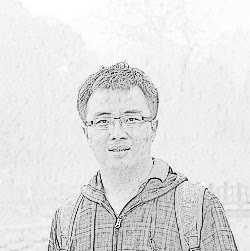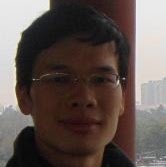Yong Zhang
age ~40
from Lagunitas, CA
- Also known as:
-
- Young Zhang
Yong Zhang Phones & Addresses
- Lagunitas, CA
- San Clemente, CA
- College Station, TX
- Irvine, CA
- Galveston, TX
- Orange, CA
Us Patents
-
Metal Nanoparticle-Decorated Nanotubes For Gas Sensing
view source -
US Patent:20220178859, Jun 9, 2022
-
Filed:Feb 22, 2022
-
Appl. No.:17/677716
-
Inventors:- Palo Alto CA, US
Clinton Smith - San Francisco CA, US
David Eric Schwartz - San Carlos CA, US
Yong Zhang - Millbrae CA, US
Vedasri Vedharathinam - Sunnyvale CA, US -
International Classification:G01N 27/04
B01J 20/20
B01J 20/02
B01J 20/32
G01N 33/00
G01N 27/12 -
Abstract:Disclosed herein are methods of producing metal nanoparticle-decorated carbon nanotubes. The methods include forming a reaction mixture by combining a first solution with a second solution, wherein the first solution comprises polymer-coated metal nanoparticles comprising metallic nanoparticles coated with a polymer, and wherein the second solution comprises carbon nanotubes. The methods also include heating the reaction mixture to a temperature greater than a glass transition temperature of the polymer for a time sufficient to cause the polymer-coated metal nanoparticles to bind to the carbon nanotubes forming the metal nanoparticle-decorated carbon nanotubes.
-
Metal Nanoparticle-Decorated Nanotubes For Gas Sensing
view source -
US Patent:20200378914, Dec 3, 2020
-
Filed:Aug 18, 2020
-
Appl. No.:16/996239
-
Inventors:- Palo Alto CA, US
Clinton Smith - San Francisco CA, US
David Eric Schwartz - San Carlos CA, US
Yong Zhang - Millbrae CA, US
Vedasri Vedharathinam - Sunnyvale CA, US -
International Classification:G01N 27/04
B01J 20/20
B01J 20/02
B01J 20/32
G01N 33/00
G01N 27/12 -
Abstract:Disclosed herein are embodiments of compositions for gas sensing and sensors utilizing the same. In one embodiment, a composition comprises carbon nanotubes and polymer-coated metal nanoparticles bound to the carbon nanotubes.
-
Adaptive Care Areas For Die-Die Inspection
view source -
US Patent:20190114758, Apr 18, 2019
-
Filed:Oct 12, 2018
-
Appl. No.:16/158774
-
Inventors:- Milpitas CA, US
Jan Lauber - San Francisco CA, US
Yong Zhang - Cupertino CA, US -
International Classification:G06T 7/00
G01N 21/95
G01N 21/88
G01N 21/956
G06T 7/11 -
Abstract:The present disclosure describes methods, systems, and articles of manufacture for performing a defect inspection of a die image using adaptive care areas (ACAs). The use of ACAs solve the problem of handling rotations of components that require rotating care areas; handling the situation where each care area requires its own rotation, translation, or affine transformation; and the situation of decoupling intensity differences caused by defects or process variation from intensity differences caused by size variations.
-
Metal Nanoparticle-Decorated Nanotubes For Gas Sensing
view source -
US Patent:20180313775, Nov 1, 2018
-
Filed:Apr 28, 2017
-
Appl. No.:15/582172
-
Inventors:- Palo Alto CA, US
Clinton Smith - San Francisco CA, US
David Eric Schwartz - San Carlos CA, US
Yong Zhang - Millbrae CA, US
Vedasri Vedharathinam - Sunnyvale CA, US -
International Classification:G01N 27/04
B01J 20/20
B01J 20/02
B01J 20/32
G01N 33/00 -
Abstract:Disclosed herein are embodiments of compositions for gas sensing and sensors utilizing the same. In one embodiment, a composition comprises carbon nanotubes and and polymer-coated metal nanoparticles bound to the carbon nanotubes.
Isbn (Books And Publications)


Changing Tax Law in East and Southeast Asia Towards the 21st Century
view sourceAuthor
Yong Zhang
ISBN #
9041104917

Comparative Studies on Governmental Liability in East and Southeast Asia
view sourceAuthor
Yong Zhang
ISBN #
9041110747
License Records
Yong Wei Zhang
License #:
2710053787
Category:
Tradesman
Name / Title
Company / Classification
Phones & Addresses
President
Zhl Meseta Group Inc
385 S Lemon Ave, Walnut, CA 91789
President
Yso Services, Inc
Nonclassifiable Establishments
Nonclassifiable Establishments
840 N Broadway, Los Angeles, CA 90012
4134 Bresee Ave, Duarte, CA 91706
4134 Bresee Ave, Duarte, CA 91706
President
Newsaga Fashion, Inc
1350 Bixby Dr, Whittier, CA 91745
President
Enc Medical Group, Inc
Group Medical Practice
Group Medical Practice
4675 Macarthur Ct, Newport Beach, CA 92660
(949)3870881
(949)3870881
Principal
Age Gilded Investment LLC
Investor
Investor
23341 Golden Spg Dr, Pomona, CA 91765
T.Z. Capital, LLC
2376 Centennial Way, Corona, CA 92882
New World International LLC
Real Estate Investment
Real Estate Investment
23341 Golden Spg Dr, Pomona, CA 91765
(909)3968886
(909)3968886
7UP BROTHER COMPANY, LLC
Medicine Doctors

Yong Zhang
view sourceSpecialties:
Internal Medicine
Work:
Kaiser Permanente Medical GroupKaiser Walnut Creek Medical Group
1425 S Main St, Walnut Creek, CA 94596
(925)2954000 (phone)
1425 S Main St, Walnut Creek, CA 94596
(925)2954000 (phone)
Education:
Medical School
Kath Univ Leuven, Fac Der Geneeskunde, Leuven, Belgium
Graduated: 1987
Kath Univ Leuven, Fac Der Geneeskunde, Leuven, Belgium
Graduated: 1987
Procedures:
Destruction of Benign/Premalignant Skin Lesions
Vaccine Administration
Vaccine Administration
Conditions:
Abdominal Hernia
Acne
Acute Pharyngitis
Alopecia Areata
Anxiety Phobic Disorders
Acne
Acute Pharyngitis
Alopecia Areata
Anxiety Phobic Disorders
Languages:
English
Spanish
Vietnamese
Spanish
Vietnamese
Description:
Dr. Zhang graduated from the Kath Univ Leuven, Fac Der Geneeskunde, Leuven, Belgium in 1987. She works in Walnut Creek, CA and specializes in Internal Medicine. Dr. Zhang is affiliated with Kaiser Permanente Walnut Creek Medical Center.
Resumes

R&D Program Manager At Jdsu
view sourceLocation:
San Francisco Bay Area
Industry:
Information Technology and Services

Global Outsourcing Specialist
view sourceLocation:
San Francisco Bay Area
Industry:
Outsourcing/Offshoring

Yong Zhang
view sourceLocation:
United States

Platform Application Engineer At Intel
view sourcePosition:
Platform Application Engineer at Intel
Location:
San Francisco Bay Area
Industry:
Semiconductors
Work:
Intel since Oct 2007
Platform Application Engineer
ATI Technologies Inc - Beijing Nov 2006 - Oct 2007
Platform Engineer
S3 Graphics Apr 2004 - Nov 2006
Software Engineer
AAEON tech Inc. Shanghai Apr 2003 - Mar 2004
Technical Support Engineer
Platform Application Engineer
ATI Technologies Inc - Beijing Nov 2006 - Oct 2007
Platform Engineer
S3 Graphics Apr 2004 - Nov 2006
Software Engineer
AAEON tech Inc. Shanghai Apr 2003 - Mar 2004
Technical Support Engineer
Education:
Beijing Institute of Technology 2000 - 2003
Master, Control Theory and Control Engineering
Master, Control Theory and Control Engineering

Yong Zhang College Station, TX
view sourceWork:
Department of Electrical and Computer Engineering, Texas A&M University
Sep 2008 to 2000
Graduate Research Assistant Freescale Semiconductor Inc
May 2012 to Aug 2012
Research Intern The Center for Microwave and RF Technologies, Shanghai Jiao Tong University
Jul 2007 to Jul 2008
Research Student State Key Laboratory of Advanced Optical Communication Systems and Networks, Shanghai Jiao Tong University
Feb 2007 to Jul 2007
Research Student
Sep 2008 to 2000
Graduate Research Assistant Freescale Semiconductor Inc
May 2012 to Aug 2012
Research Intern The Center for Microwave and RF Technologies, Shanghai Jiao Tong University
Jul 2007 to Jul 2008
Research Student State Key Laboratory of Advanced Optical Communication Systems and Networks, Shanghai Jiao Tong University
Feb 2007 to Jul 2007
Research Student
Education:
Texas A&M University
College Station, TX
Aug 2008
Ph.D. in Electrical and Computer Engineering Shanghai Jiao Tong University
2004 to 2008
B.S. in Engineering
College Station, TX
Aug 2008
Ph.D. in Electrical and Computer Engineering Shanghai Jiao Tong University
2004 to 2008
B.S. in Engineering
Skills:
C/C++, pthread, MPI, OpenMP, Perl, Tcl/Tk, Linux/Unix, python, FORTRAN, SPICE, verilog, Cadence Virtuoso, MATLAB/Simulink, Modelsim

Yong Min Zhang California
view sourceWork:
restaurant
ca
Mar 2011 to Sep 2012
sushi chef
ca
Mar 2011 to Sep 2012
sushi chef
Education:
shen yang college
shen yang
2007 to 2009
college cook in cook
shen yang
2007 to 2009
college cook in cook
Myspace

Yong Yi Zhang
view source
Yong Mei Zhang
view source
Yong Qiang Zhang
view source
Yong Chen Zhang
view source
Yong Jie Zhang
view source
Yong Qing Zhang
view source
Yong Zhi Zhang
view source
Yong Zhang
view sourceYoutube
Plaxo

Zhang Yong
view sourcekangyongtechserviceco

Zhang Yong
view sourceJinjingjiu Spetial Metal Company

Yong Zhang
view sourcealibaba com
Googleplus

Yong Zhang
Lived:
College Station, Texas, USA
Shanghai, China
Shijiazhuang, Hebei, China
Quzhou, Hebei, China
Shanghai, China
Shijiazhuang, Hebei, China
Quzhou, Hebei, China
Work:
Texas A&M University - Research Assistant
Education:
Texas A&M University - Computer Engineering, Shanghai Jiao Tong University - Electronic Engineering

Yong Zhang
Work:
Adobe Systems (2010)
Education:
Ustc
Tagline:
Who knows me

Yong Zhang
Relationship:
Single
Bragging Rights:
会昌空虎、汗落乡土

Yong Zhang
Education:
University of Western Australia - Engineering, Curtin University of Technology - Engineering

Yong Zhang
Bragging Rights:
十堰职业技术学院

Yong Zhang
Education:
University of Western Ontario

Yong Zhang
About:
外圆内刚
Bragging Rights:
书海20年

Yong Zhang
Flickr
News

Cosmic Buckyballs Could Be The Source of Mysterious Infrared Light
view source- What that research didn't cover was the changes that level of ionization would wreak on the light emitted by the buckyballs. Sadjadi, Parker and their colleagues Chih-Hao Hsia and Yong Zhang, both also affiliated with the Laboratory for Space Research, set out to investigate.
- Date: Aug 02, 2022
- Category: Science
- Source: Google

CRISPR Variant Produces Tuberculosis Resistant Cows
view source- "We used a novel version of the CRISPR system called CRISPR/Cas9n to successfully insert a tuberculosis resistance gene, called NRAMP1, into the cow genome., explained senior study investigator Yong Zhang, Ph.D., principal investigator at Northwest A&F University. We were then able to successf
- Date: Feb 01, 2017
- Category: Health
- Source: Google

Better batteries through biology?
view source- In addition to Oh, Belcher, and Shao-Horn, the work was carried out by MIT research scientists Jifa Qi and Yong Zhang and postdoc Yi-Chun Lu. The work was supported by the U.S. Army Research Office and the National Science Foundation.
- Date: Nov 13, 2013
- Category: Sci/Tech
- Source: Google

Research Shows Stars Create Organic Matter of Unexpected Complexity
view source- Sun Kwok and Dr. Yong Zhang of The University of Hong Kong have made the groundbreaking discovery that much of the previously unexplained organic matter that floats between the stars is startlingly more complex than previously thought. Some of the structures are actually so complex that they resemb
- Date: Oct 27, 2011
- Category: Sci/Tech
- Source: Google

Cosmic dust contains organic matter from stars, study finds
view source- Scanning the cosmos in infraredKwok and his colleague Yong Zhang, also of the University of Hong Kong, studied a set of well-known but mysterious infrared emissions found in stars, interstellar space and galaxies. These phenomena, which are collectively called Unidentified Infrared Emission (U
- Date: Oct 27, 2011
- Source: Google

Stars manufacturing complex organic matter?
view source- compounds of unexpected complexity - some resembling coal and petroleum - exist throughout the universe and are being made by stars. The proponents of this controversial idea, Professors Sun Kwok and Yong Zhang of the University of Hong Kong, argue their case in the current issue of the journal Nature.
- Date: Oct 27, 2011
- Category: Sci/Tech
- Source: Google

Discovery: Cosmic Dust Contains Organic Matter from Stars
view source- Kwok and his colleague Yong Zhang, also of the University of Hong Kong, studied a set of well-known but mysterious infrared emissions found in stars, interstellar space and galaxies. These phenomena, which are collectively called Unidentified Infrared Emission (UIE) features, have been known
- Date: Oct 26, 2011
- Source: Google
Get Report for Yong Zhang from Lagunitas, CA, age ~40














